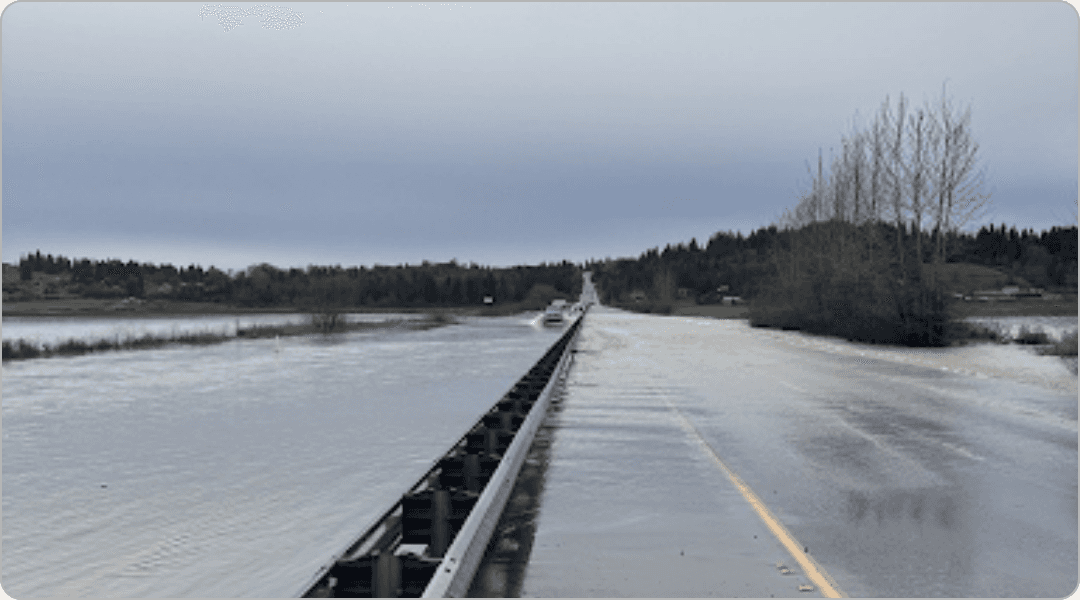Prepare
Recovery
A Guide to Creating Your Home Contents Inventory
Sep 29, 2025
A contents inventory is a detailed list (generally a spreadsheet) of every item inside your home that isn’t part of any structure. Whether you’re a homeowner or renter, it’s often required by insurance companies or FEMA in order to receive benefits after any damage or loss.
Having an inventory of everything inside your home is one of the most important things you can do to help you and your family get the most insurance and aid coverage possible after a disaster, which ultimately gets your life back to normal again.
Before disaster strikes, you can prepare by simply documenting your home, by taking a long, slow video around each room along with a series of photographs that capture the contents of every room in your home, all saved to the cloud. This is something you can do today, so you and your family are ready if an unexpected disaster ever strikes.
Why is a contents inventory important?
Every insurance company settlement, every federal aid agency offer, and your future tax returns will benefit greatly from having a comprehensive list of all the items (along with their approximate values) that were in your home prior to anything happening to them. Having an accurate inventory means you can describe your possessions using your own real replacement costs and get properly compensated for anything that was lost or damaged.
In most cases, people will create their complete contents inventory immediately after a disaster to be used for insurance claims and/or aid applications.
What does a home contents inventory look like?

A contents inventory is exactly what it sounds like, a full inventory of everything inside your home that you own, including furniture, clothing, items in your garage, and everything that was inside of cabinets and drawers.
Post-disaster, listing everything you own sounds daunting, but you can break the work into smaller chunks by starting with a single room, then listing your biggest or most expensive things in it before moving on to smaller items. When you’re done with one room, move on to the next one. In just a couple hours, you should have a rough idea of the value of most major items in your home.
Bright Harbor has created a contents inventory template you can copy to your own Google Sheets account to start filling out whenever you might need it someday.
What’s the best way to get started today?
The good news is that you can do a bit of work now that will be useful in the event of anything catastrophic ever happening in the future.
Take video and photos to document the contents of your home (10-20 minutes)
The best thing you can do is take a video inside your home. Walk slowly through each room, and pan around into each corner. When you encounter drawers, slowly open them one by one and record what is inside. Having, say, a 15 minute long video of your home’s interior is a great way to document your belongings for any future insurance or aid estimates. Also remember to save the video in the cloud so you can fetch it later from anywhere.
You might not be able to see every book on your bookshelf or know the precise value of every item of clothing you own, but having a video of what your closet or living room looked like pre-disaster is a good way to estimate how many items will need replacement and can be used for producing rough estimates of costs. If you want to spend more time and get more detail, take additional photos of bookshelves and closets to capture shots of everything on your shelves.

When a full contents inventory is needed, fill out your spreadsheet (30min per room)
Bright Harbor’s spreadsheet template is designed for anyone to create their own home’s content inventory. We included common room types as separate sheets found along the bottom, with sample items inside each room. It’s worth stating the obvious, but you don’t have to fill the spreadsheet out from beginning to end in a single sitting.
Once you’ve experienced a disaster, grab a laptop or a mobile phone and start walking around your home, beginning with your living room. List each piece of furniture in the room, then move on to smaller items like electronics and items on shelves, along with the approximate prices you remember paying when they were new. It will likely take several minutes to describe everything in most rooms, but pause the project after you’ve completed your first room.
If you don’t have access to your home after an event, use the video and photos you previously took to build your contents inventory from afar.

Filling out an inventory list is a big project so follow the pattern of listing big items first, then add smaller things. Take a break whenever a room is done. Repeat the process. Completing an average home in this way may only take a few hours of concerted effort.
Save time with the help of A.I.
You can automate tedious details by using popular AI services like ChatGPT, Claude, or Gemini. Upload your inventory video or take stills of say, a bookshelf and ask their AI to identify each book and share its title and author along with the book’s page on Amazon.

Using AI for inventory photos means a forgotten stack of things on a shelf in your home might actually be worth hundreds of dollars in replacement costs that you normally would have missed.
What your contents inventory helps with, post-disaster
In the immediate aftermath of a disaster, aid agencies and insurance agents will ask for details of your losses. Having a detailed inventory available soon after will push your applications and approvals to the front of the line, helping your recovery start immediately.
Generally speaking, FEMA applications won’t need an exhaustive contents inventory as their funding levels generally offer lower payouts aimed at making homes minimally viable in lieu of replacing every last item. However, insurance appraisals and future tax write-offs will benefit you from having a detailed inventory of all items. The amount of time you put into chronicling them should result in more complete settlements that ultimately get your life back on track.
Different agencies and insurance companies will have differing requirements for a contents inventory and also be sure to check with our local and state agencies as requirements can vary based on where you live.
——————————————————————————————————————————————————
The best way to prepare for future disasters is by starting today. Get your phone out and take a long, detailed video along with photos of the inside of your home. Ultimately, this small amount of work creates great documentation you can use in the future to better protect your family and your home.




